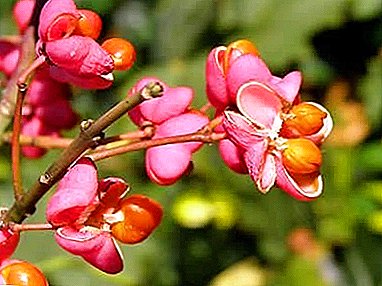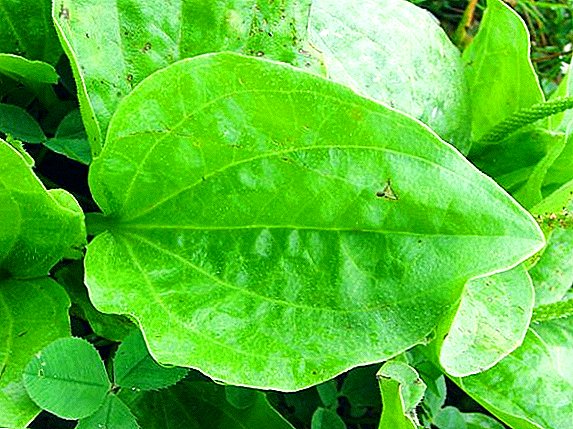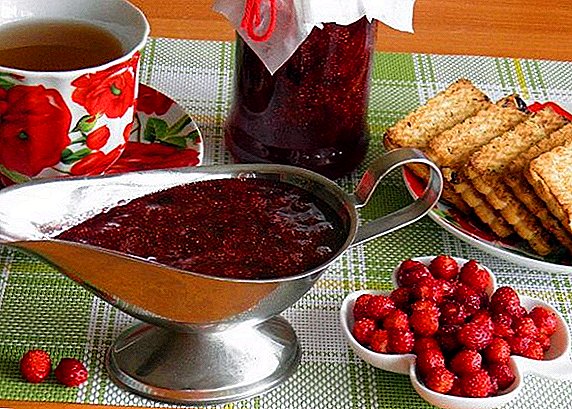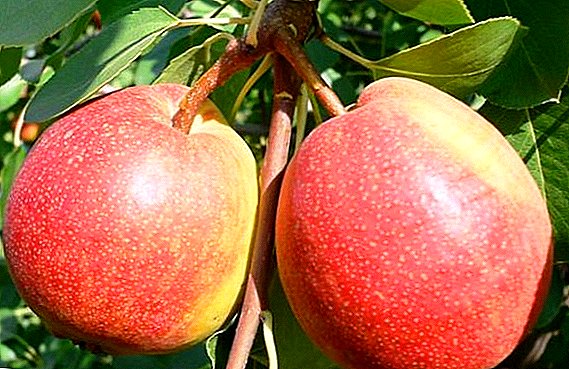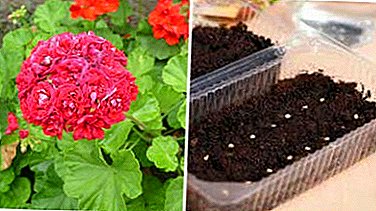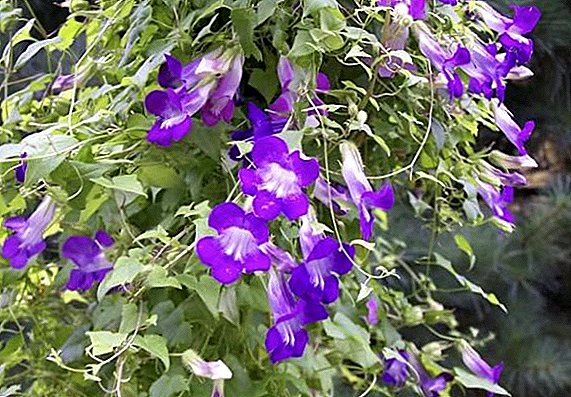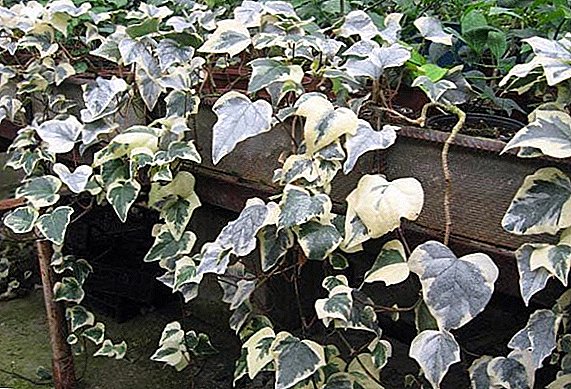 Among the large number of indoor plants one of the most popular is the evergreen vine with the unusual name Canary ivy.
Among the large number of indoor plants one of the most popular is the evergreen vine with the unusual name Canary ivy.
Homeland ivy are subtropical areas of most continents, but with proper care, the plant will feel great in the indoor environment.
Description
Room canary ivy (Hedera canariensis) is a large-leaved evergreen vine, which differs from its "older brother" of ordinary ivy by brown young shoots and leaves, which are mostly whole.  The length of an adult leaf plate can reach 12 centimeters, and during rubbing a heady nutmeg aroma is felt.
The length of an adult leaf plate can reach 12 centimeters, and during rubbing a heady nutmeg aroma is felt.
Ivy creepers are very common indoor plants, but their attractive appearance is the result of careful care of them.
Did you know? In ancient Greece, ivy was an emblem of joy and love. Also on holidays, famous poets put wreaths made of ivy on their heads.
Growing conditions
Ivy is a relatively unpretentious plant, but if you do not follow certain rules, the indoor vine will look sloppy, and young shoots can often hurt.
One of the most important factors for the favorable growth of ivy is the humidity of the room. 
Temperature
Hedera canariensis is not very whimsical to environmental changes and can adapt to almost any conditions. It is enough to follow a simple rule: higher temperature - higher humidity of the room.
Important! A feature of this species is the inability to cling to the support, and therefore the plant needs a garter.The optimum temperature in the hot season is + 16 ... +18 degrees, in winter the liana is able to withstand even negative temperatures, reaching up to minus 10 ° C.
Air humidity
The house liana perfectly grows at high humidity. In spring and summer, it is worth spraying the leaves with clean water every day, and in winter, spraying can be reduced to 1 time per week depending on the air temperature.  If in summer you need to leave a flower for a couple of days, you need to lay wet pebbles under the pot. In such conditions, ivy can do without additional watering. At low humidity, the tips of the leaves will dry.
If in summer you need to leave a flower for a couple of days, you need to lay wet pebbles under the pot. In such conditions, ivy can do without additional watering. At low humidity, the tips of the leaves will dry.
Lighting
Canary ivy is a light-loving culture, but in order to maintain the saturation of the color of the leaves, you should avoid direct sunlight. Support for creepers should be placed in a spacious bright place. With a lack of light, the shoots are irregular in shape and size, and the stems are bent.
Ornamental lianas also include tree pliers, ipomoea, clerodendrum, philodendron, wisteria, stephanotis, campsis, syngonium, clematis, honeysuckle capricoleum, girlish grapes, lagenaria.
The soil
Peat mix or clay soil is ideal as a filler for a pot, which can be purchased at any nearby agricultural store. You can also use a peat pot as your first ivy home.
Care
If a houseplant grows well, then the owner is properly caring for his flower. Liana does not require special care, however, subject to simple rules, indoor ivy will grow faster and more abundantly. 
Watering
Canary ivy loves moisture, but if you overdo it, bright green leaves may lose their color. Watering is 2-3 times a week in the warm season and once a week - in the cold.
Watering is carried out with clean water at room temperature, so as not to injure the root system. For the scarce daily spraying in the heat of the plant will be very grateful. If the shoots of the vines have turned yellow in winter, it is worth reducing the number of waterings.
Did you know? Ivy is one of the plants that do not burn. If during a fire on the path of fire a dense wall of ivy appears, the fire will not be able to overcome it.
Top dressing
Ivy does not need constant additional feeding, but during the growth period it is possible to help the vine grow with the help of fertilizers for house plants.  It is necessary to carry out such feeding no more than once every 3 weeks, taking into account the rules of breeding and proportions specified by the manufacturer.
It is necessary to carry out such feeding no more than once every 3 weeks, taking into account the rules of breeding and proportions specified by the manufacturer.
Pruning
An important role in the care of Canary ivy at home is played by proper and timely pruning. Ivy must be constantly cut, forming its appearance.
If you regularly do not follow its growth and development, the vines will look carelessly, and the shoots will “scatter” in different directions.
Diseases and pests
The red spider mite is the most terrible enemy of the Canarian creeper. Insects of this species infect the stem of the plant, disrupting the circulation of microorganisms, and leave shapeless gray, less often brown spots.  The mite infects the flower in the case of too dry air, so the main precautionary measure is to regularly spray ivy leaves and stems.
The mite infects the flower in the case of too dry air, so the main precautionary measure is to regularly spray ivy leaves and stems.
If, however, the plant is affected, the leaves and stems of the vines should be washed with a concentrated soap solution, and then treated with "Fitoderm" or another insect-acaricide with a broad spectrum of action.
Also, the plant sometimes affects an ordinary spider mite, which lives on the back of the leaves or young shoots.
On the face plate of the diseased leaf, yellowish spots and dots appear, and with a strong lesion at the base of the leaves a thin cobweb, resembling down, may appear.
For the most effective fight against spider mites, the plant must be sprayed several times with “Pyrethrum” diluted in water. The interval between procedures should be 7-10 days.  In spring and summer vines can be an excellent profit for the common aphid. Aphids are a group insect living with entire families on the back of a leaf. Affected leaves turn yellow and curl, losing juice.
In spring and summer vines can be an excellent profit for the common aphid. Aphids are a group insect living with entire families on the back of a leaf. Affected leaves turn yellow and curl, losing juice.
To combat aphids, the plant must be treated with a solution of green soap or any insect acaricide, which can be purchased at the store.
Important! After a period of regeneration, dark blue berries appear on the ivy, which are very poisonous.Thus, if you follow a small, but very important for Canary ivy laws, you can grow a beautiful broadleaf creeper in your apartment without much difficulty. The plant will delight the eye with green large leaves regardless of the season.


